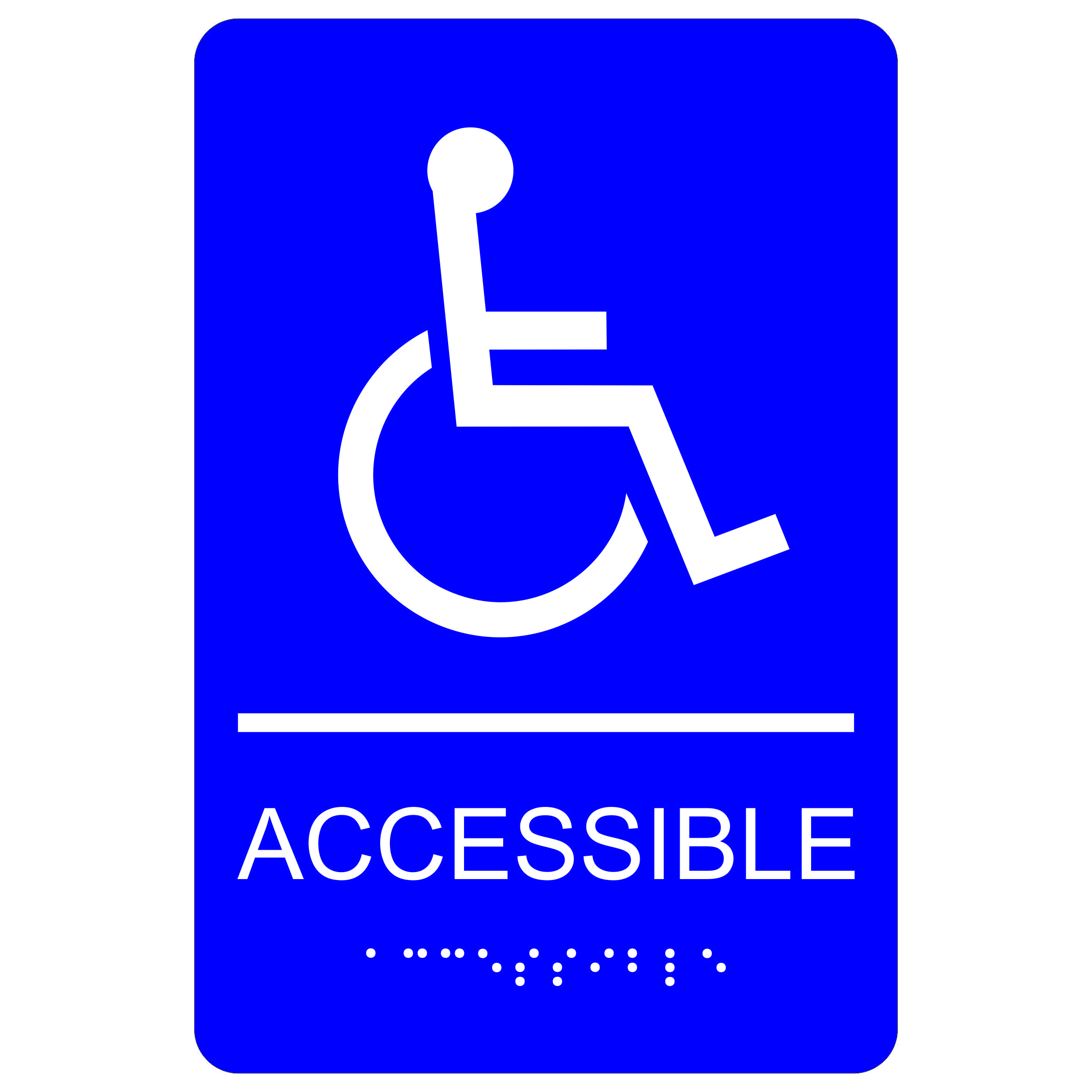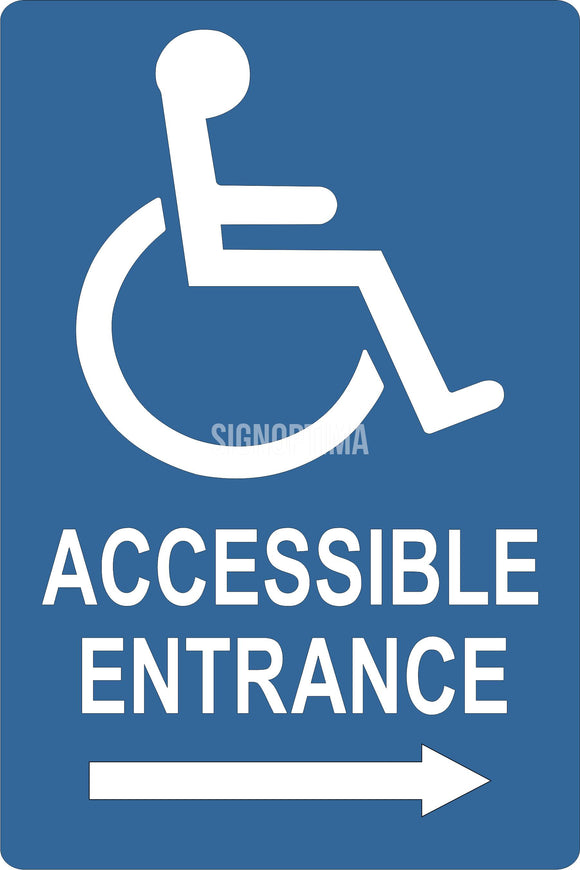A Comprehensive Guide to Choosing the Right ADA Signs
A Comprehensive Guide to Choosing the Right ADA Signs
Blog Article
Discovering the Trick Attributes of ADA Indicators for Improved Availability
In the world of availability, ADA signs offer as quiet yet effective allies, ensuring that rooms are comprehensive and navigable for people with disabilities. By integrating Braille and tactile components, these signs break obstacles for the aesthetically impaired, while high-contrast color systems and legible font styles cater to varied visual requirements.
Relevance of ADA Compliance
Guaranteeing conformity with the Americans with Disabilities Act (ADA) is vital for cultivating inclusivity and equivalent accessibility in public spaces and work environments. The ADA, enacted in 1990, mandates that all public centers, employers, and transport services accommodate individuals with impairments, ensuring they take pleasure in the same rights and opportunities as others. Conformity with ADA criteria not only fulfills lawful responsibilities yet also boosts an organization's track record by demonstrating its dedication to variety and inclusivity.
One of the crucial aspects of ADA compliance is the application of obtainable signage. ADA indications are developed to make sure that people with disabilities can easily browse through areas and buildings. These indicators have to abide by details standards pertaining to dimension, font, color contrast, and positioning to ensure exposure and readability for all. Correctly carried out ADA signs assists remove obstacles that individuals with impairments often come across, thus promoting their freedom and self-confidence (ADA Signs).
In addition, adhering to ADA guidelines can mitigate the risk of lawful effects and potential fines. Organizations that stop working to comply with ADA standards may face fines or lawsuits, which can be both harmful and monetarily burdensome to their public image. Thus, ADA compliance is integral to fostering a fair atmosphere for everyone.
Braille and Tactile Components
The unification of Braille and responsive components right into ADA signs embodies the principles of availability and inclusivity. It is typically positioned beneath the matching message on signs to ensure that people can access the information without aesthetic support.
Responsive components expand beyond Braille and consist of elevated characters and signs. These parts are created to be noticeable by touch, enabling individuals to identify area numbers, toilets, leaves, and various other essential locations. The ADA sets particular guidelines regarding the dimension, spacing, and positioning of these tactile elements to maximize readability and make sure consistency across various atmospheres.

High-Contrast Color Design
High-contrast color systems play an essential role in boosting the exposure and readability of ADA signs for individuals with visual problems. These schemes are crucial as they optimize the difference in light reflectance between message and history, making certain that indications are quickly noticeable, also from a distance. The Americans with Disabilities Act (ADA) mandates making use of specific shade contrasts to fit those with minimal vision, making it a critical aspect of conformity.
The efficacy of high-contrast colors exists in their capability to attract attention in various lights conditions, including poorly lit environments and areas with glow. Generally, dark message on a light history or light text on a dark history is used to achieve ideal comparison. As an example, black text on a yellow or try this website white history offers a plain aesthetic difference that aids in quick acknowledgment and understanding.

Legible Fonts and Text Size
When taking into consideration the design of ADA signage, the choice of clear font styles and proper message dimension can not be overstated. These elements are vital for making certain that indicators come to individuals with visual impairments. The Americans with Disabilities Act (ADA) mandates that fonts must be sans-serif and not italic, oblique, script, highly decorative, or of unusual form. These requirements help ensure that the text is conveniently legible from a range which the personalities are distinct to varied target markets.
According to ADA guidelines, the minimal text elevation must be 5/8 inch, and it should raise proportionally with seeing range. Consistency in text dimension contributes to a natural visual experience, aiding people in browsing atmospheres effectively.
In addition, spacing between lines and letters is important to legibility. Appropriate spacing avoids personalities from appearing crowded, improving readability. By sticking to these requirements, developers can considerably boost ease continue reading this of access, making certain that signage offers its desired purpose for all people, no matter of their visual abilities.
Reliable Placement Methods
Strategic placement of ADA signs is crucial for taking full advantage of accessibility and ensuring compliance with legal requirements. ADA guidelines stipulate that signs ought to be installed at a height between 48 to 60 inches from the ground to guarantee they are within the line of view for both standing and seated individuals.
Additionally, signs have to be positioned beside the latch side of doors to allow very easy identification before access. This positioning assists individuals situate areas and areas without obstruction. In cases where there is no door, indicators must be situated on the local surrounding wall surface. Consistency in indicator positioning throughout a facility enhances predictability, reducing complication and enhancing total customer experience.

Verdict
ADA signs play an important role in advertising accessibility by integrating attributes that address the requirements of people with disabilities. Integrating Braille and responsive components ensures important information is available to the aesthetically damaged, while high-contrast color design and readable sans-serif typefaces boost visibility across different lights conditions. Efficient positioning strategies, such as proper placing elevations and strategic areas, better facilitate navigation. These elements collectively promote a comprehensive atmosphere, emphasizing the relevance of ADA conformity in ensuring equal gain access to for all.
In the world of availability, ADA indications offer as silent yet powerful allies, guaranteeing that spaces are inclusive and navigable for individuals with specials needs. The ADA, established in 1990, mandates that all public centers, companies, and transport solutions suit individuals with disabilities, ensuring they take pleasure in the very same civil liberties and opportunities as others. ADA Signs. ADA indications are designed to make certain that people with specials needs can quickly browse via rooms and buildings. ADA guidelines stipulate that indications ought to be placed at a height between 48 to 60 inches visit the site from the ground to ensure they are within the line of view for both standing and seated people.ADA signs play an essential function in promoting access by integrating attributes that attend to the needs of individuals with disabilities
Report this page